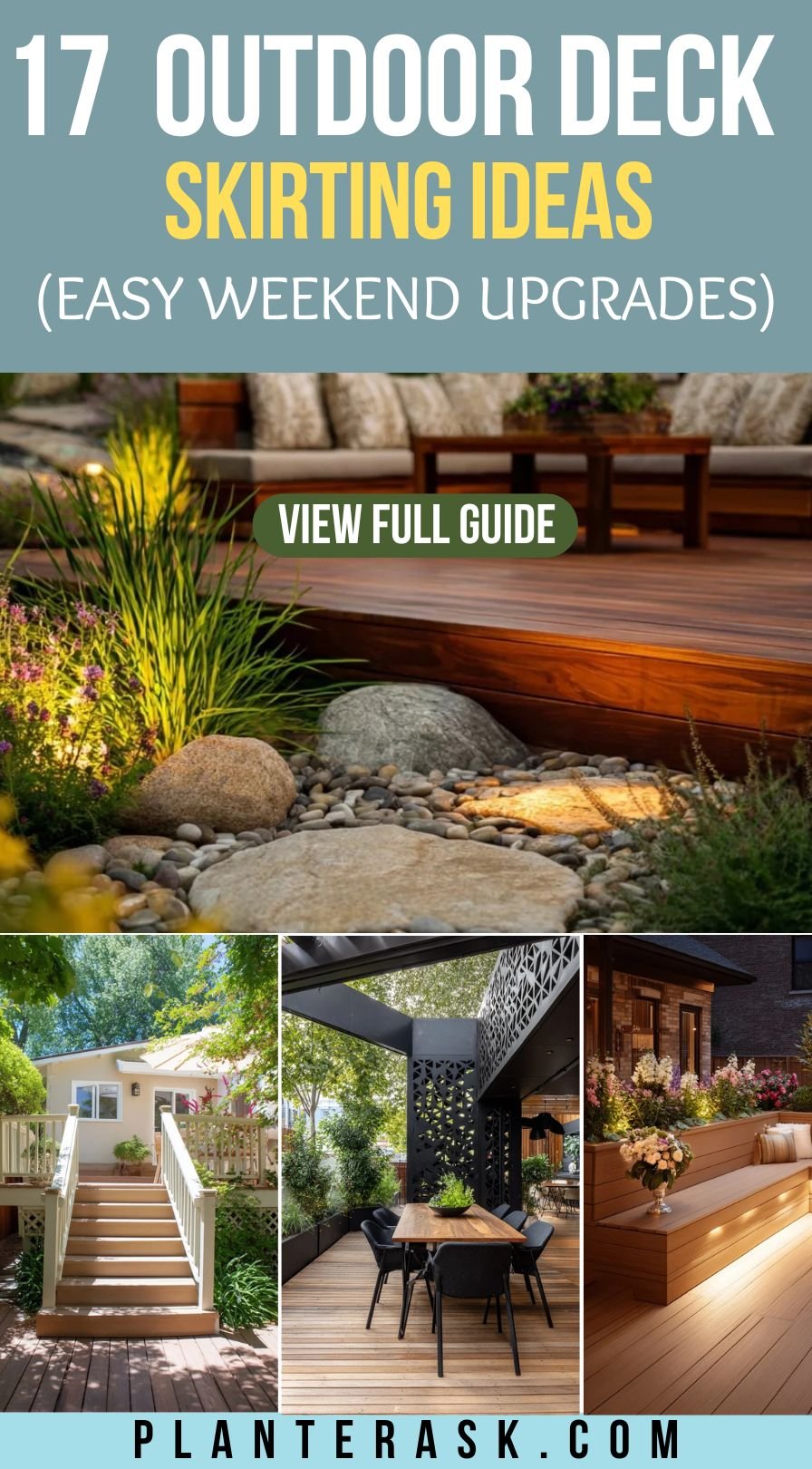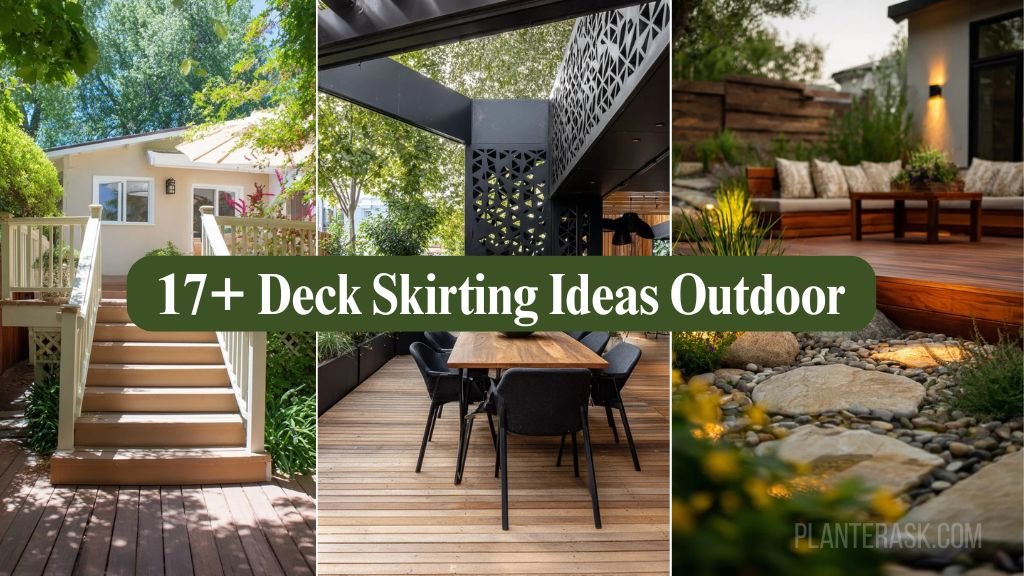You know that awkward gap under the deck? The one that ends up being a home for stray leaves, forgotten toys, or whatever the wind blows in? It’s not the end of the world, but let’s be honest, it’s not exactly pretty either.
That’s where skirting comes in. Done right, it’s like giving your deck a pair of well-tailored pants, suddenly, the whole thing looks more put together. And it’s not just about looks; skirting can hide storage, block critters, and even add a little character to the space.
It’s amazing how many directions you can take it. Horizontal wood slats for a modern vibe. Reclaimed barn boards for something rustic. Decorative panels that let the breeze through but keep the mess out. Even bold paint if you want to make it a design feature instead of a background detail.
So if you’ve been ignoring that empty space because you’re not sure what to do with it, these 17 deck skirting ideas might just change your mind. They’ll turn “don’t look down there” into “yep, I planned that.”
1. Use Lattice Skirting to Soften Elevated Decks
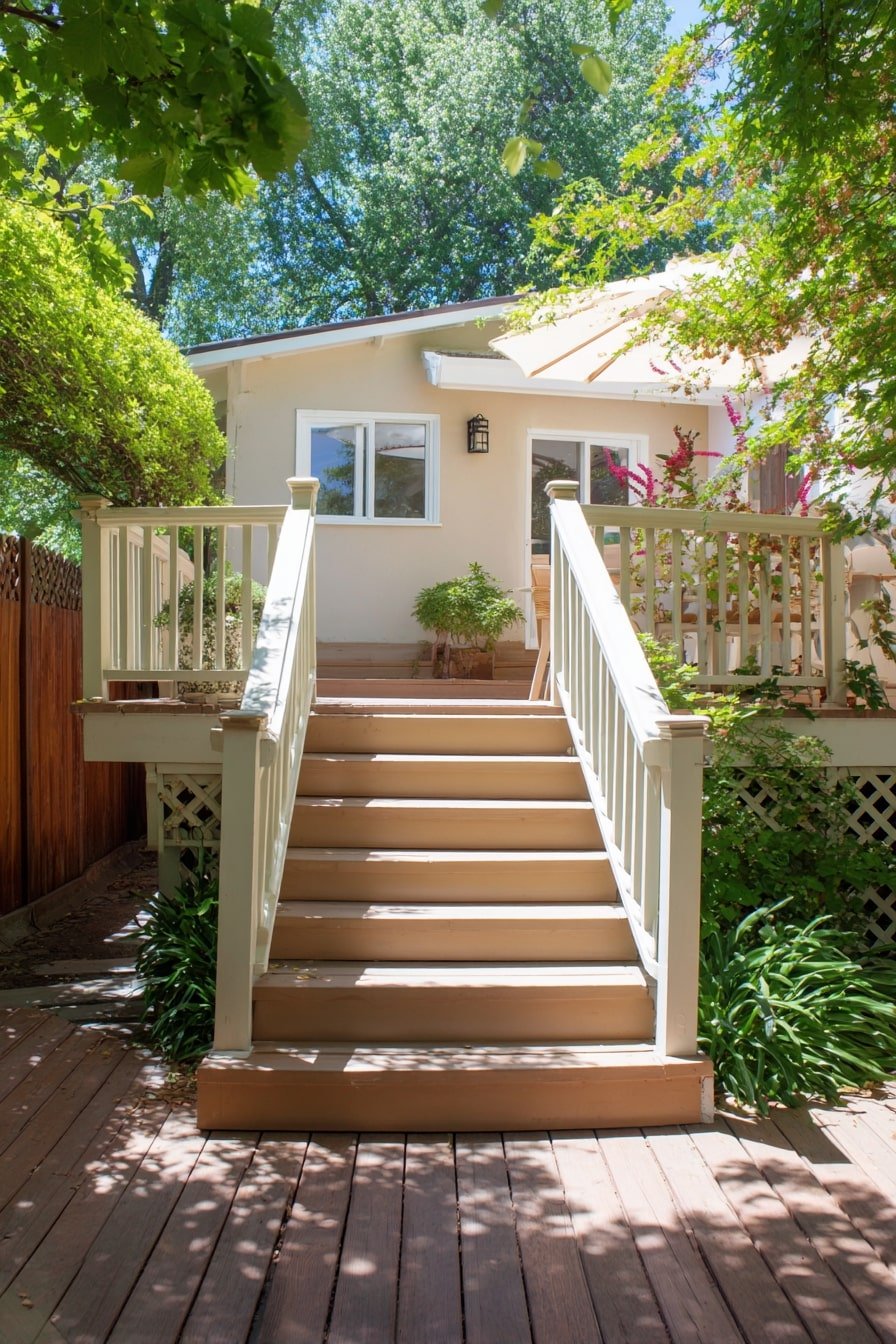
Broad, cream-painted railings draw the eye upward, but it’s the subtle lattice skirting below that anchors the structure.
It hides the under-deck void while allowing airflow , crucial for preventing moisture buildup. The pale tone blends with the stair risers, keeping focus on the clean lines and lush plantings.
A balance of concealment and breathability.
2. Build a Stone Skirt for Timeless Texture
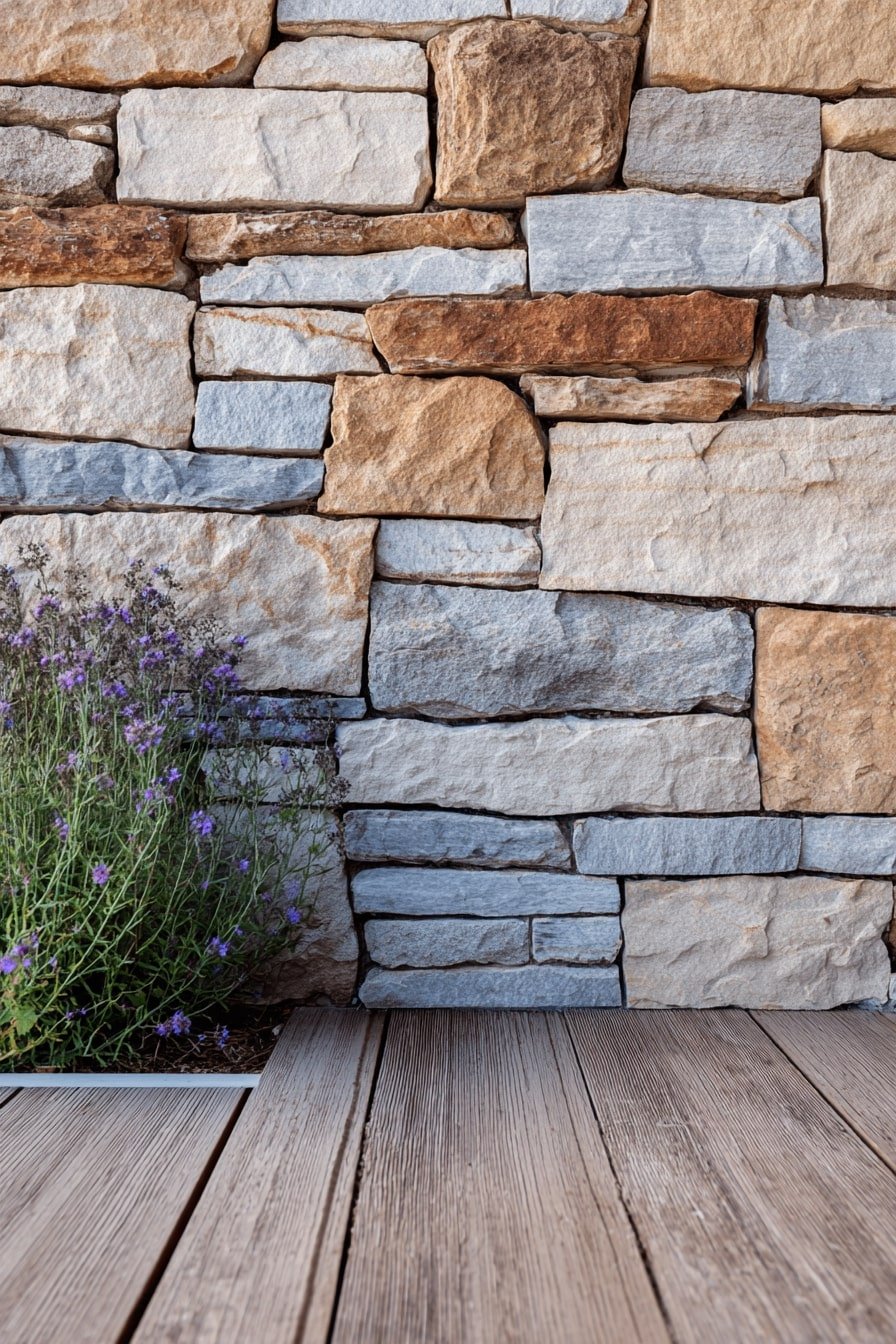
Cut stone skirting gives weight to the deck, grounding it in the landscape.
Warm beige and cool gray blocks create a natural rhythm, each with unique surface texture that plays with sunlight.
Gaps are tight, edges clean, so it reads refined rather than rustic. Works beautifully with weathered decking and soft plantings for balance.
3. Use Laser-Cut Panels for Bold Deck Skirting
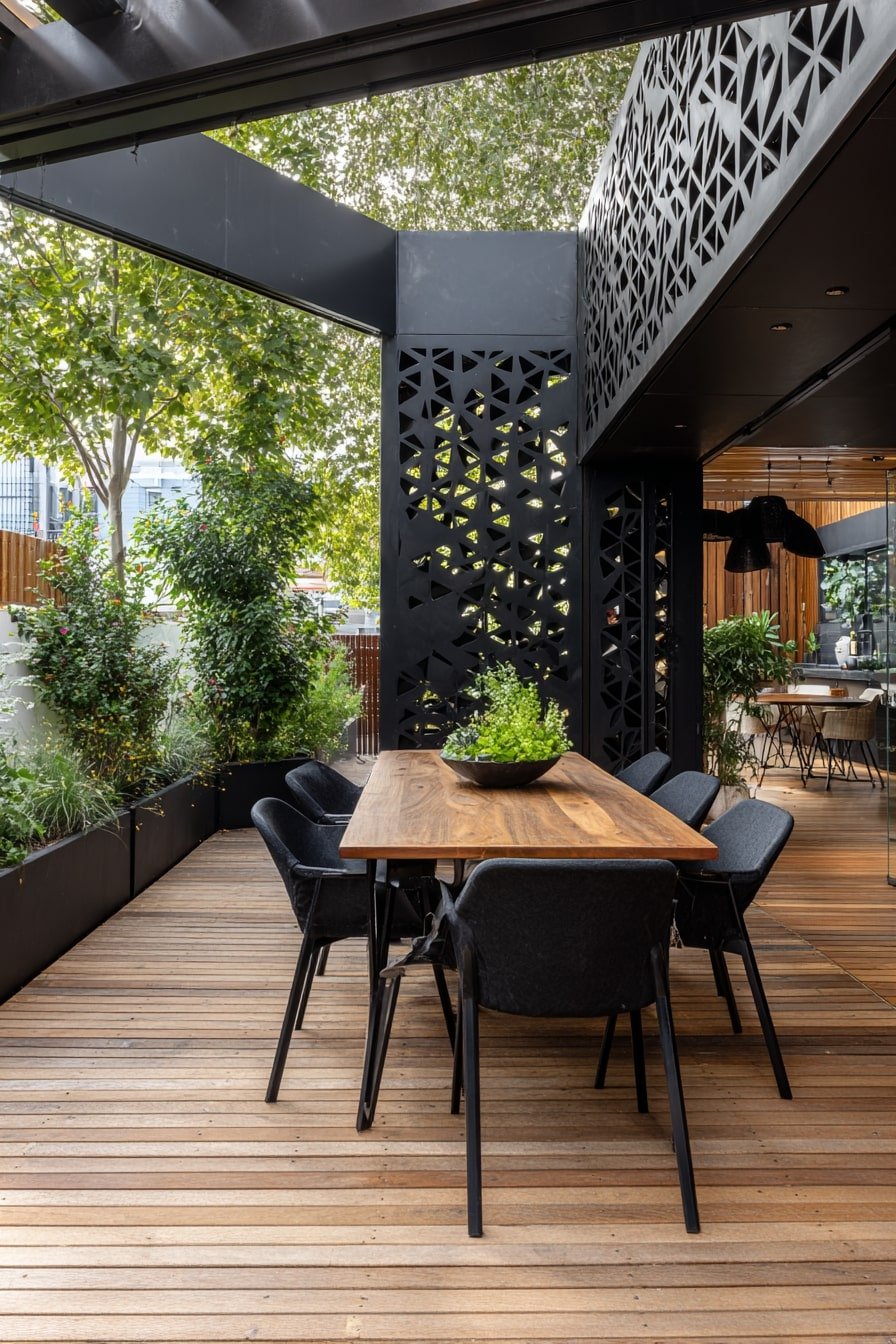
Geometric cutouts in matte-black metal turn skirting into a statement. Light filters through the triangular openings, casting shifting patterns across warm timber decking.
Panels double as privacy screens, blocking views without closing off airflow. It feels modern, even architectural, while still tying into the garden through repeated shapes and the deep contrast against greenery.
4. Integrate Hidden Lighting into Deck Skirting
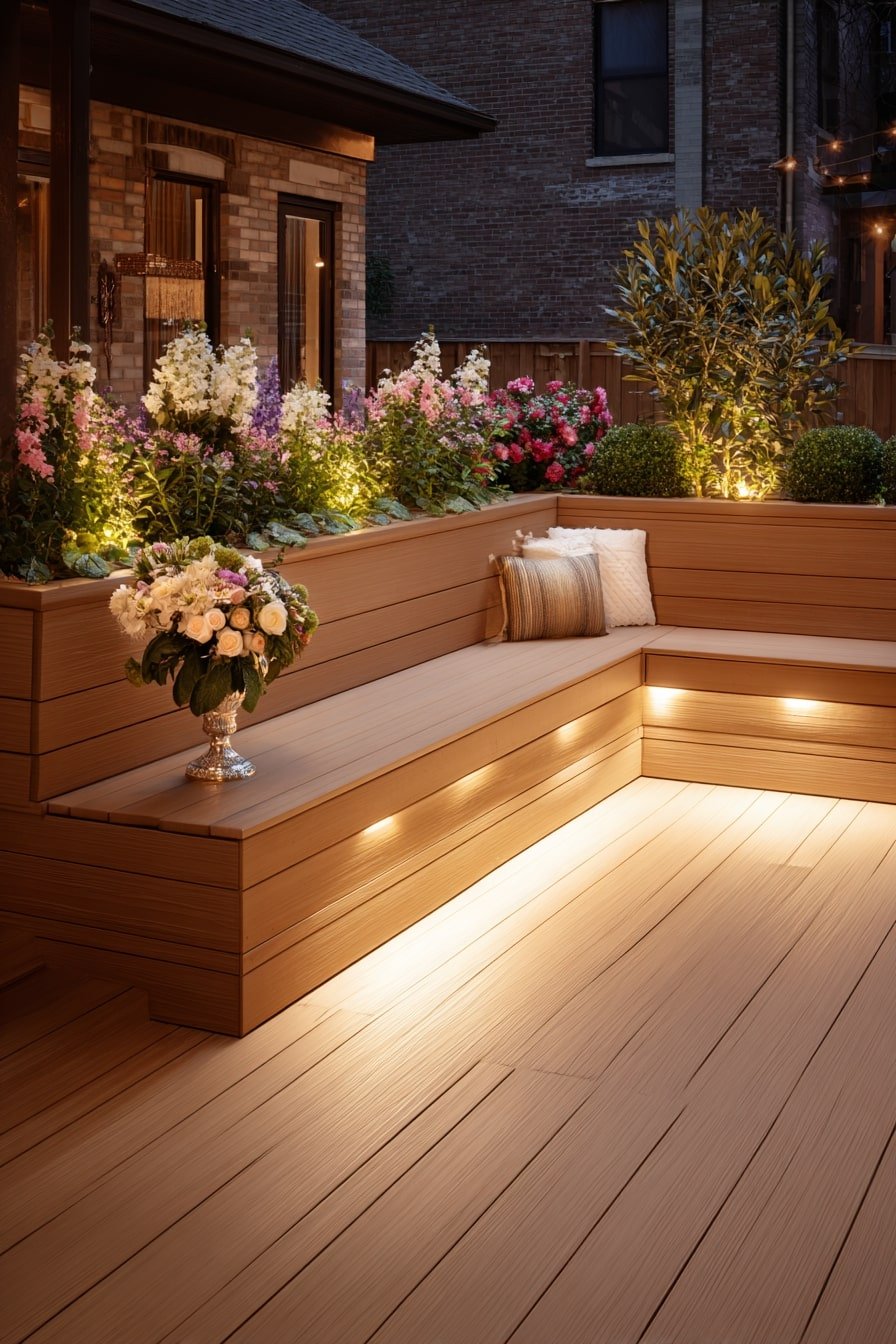
Seating doubles as skirting here, with clean horizontal boards wrapping the base.
Warm LED strips tucked beneath the benches wash the decking in a soft glow, making edges visible at night without glare.
Planters above overflow with blooms, adding color and scent. It’s functional concealment, storage, and atmosphere all rolled into one neat line.
5. Pair Low Wood Skirting with a Rock Garden Edge

Smooth timber skirting runs flush with the deck, hiding structural gaps while keeping the profile clean.
River rock and boulder landscaping hugs the base, blending built and natural elements. Warm uplighting makes both textures pop at dusk.
It’s understated yet layered, and it works especially well where a deck transitions directly into a planted landscape.
6. Match Deck Skirting to Surrounding Architecture
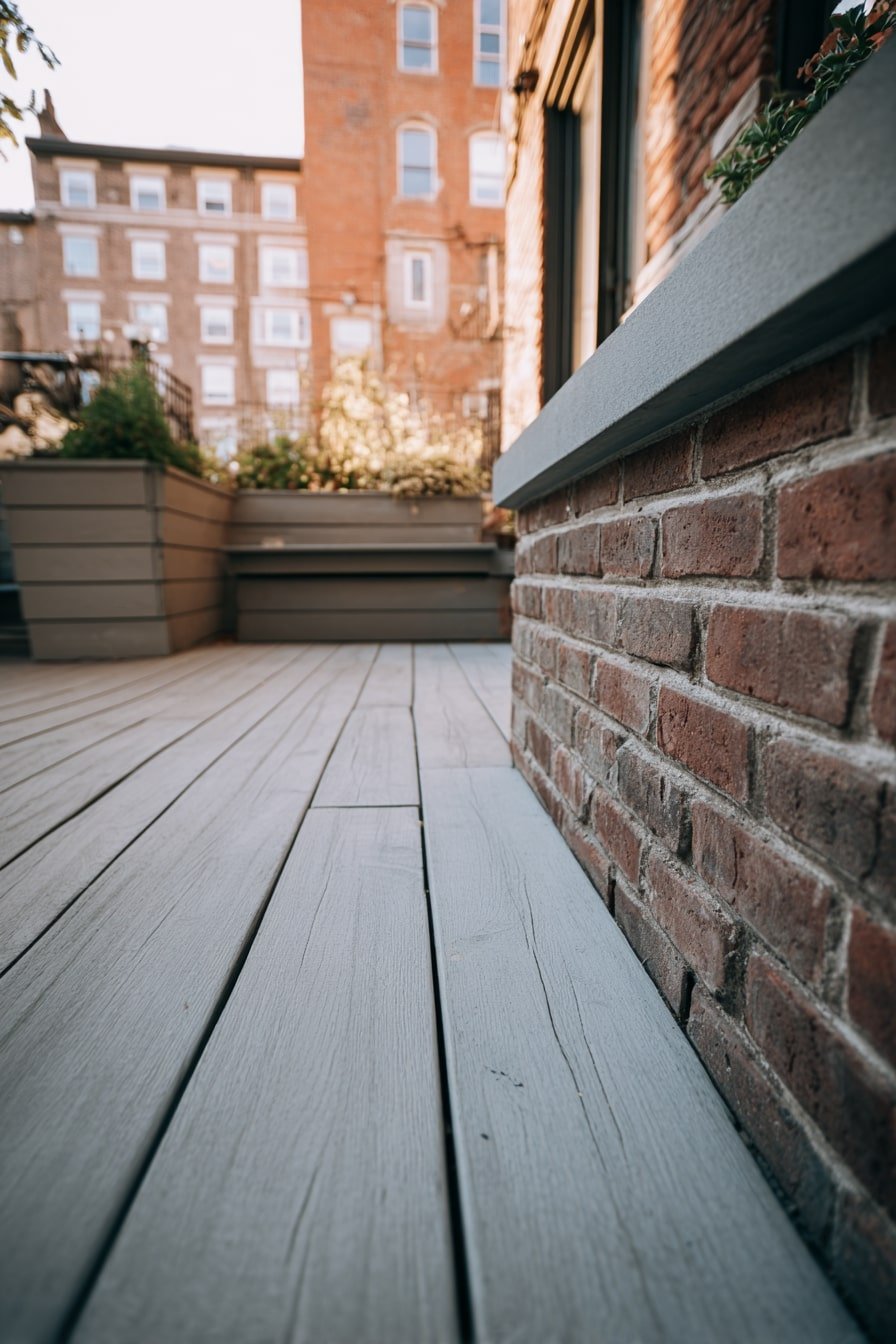
Grey composite skirting sits flush with the deck boards, echoing the tone of the brick sill above. The alignment feels deliberate, bridging old masonry and new decking.
Clean lines keep the look crisp in a tight urban courtyard. It’s a subtle but effective way to blend modern surfaces into a historic or industrial backdrop.
7. Blend Step Skirting with Stone Pavers for Seamless Flow

Low, wide steps double as subtle skirting, concealing the patio base while connecting smoothly to stone paver paths.
White paneling from the house extends downward, keeping lines consistent and clean.
The pale tones link architecture and landscaping, making the transition from grass to seating area feel effortless. A quiet, understated solution with strong visual unity.
8. Use Lush Plant Borders as Living Skirting
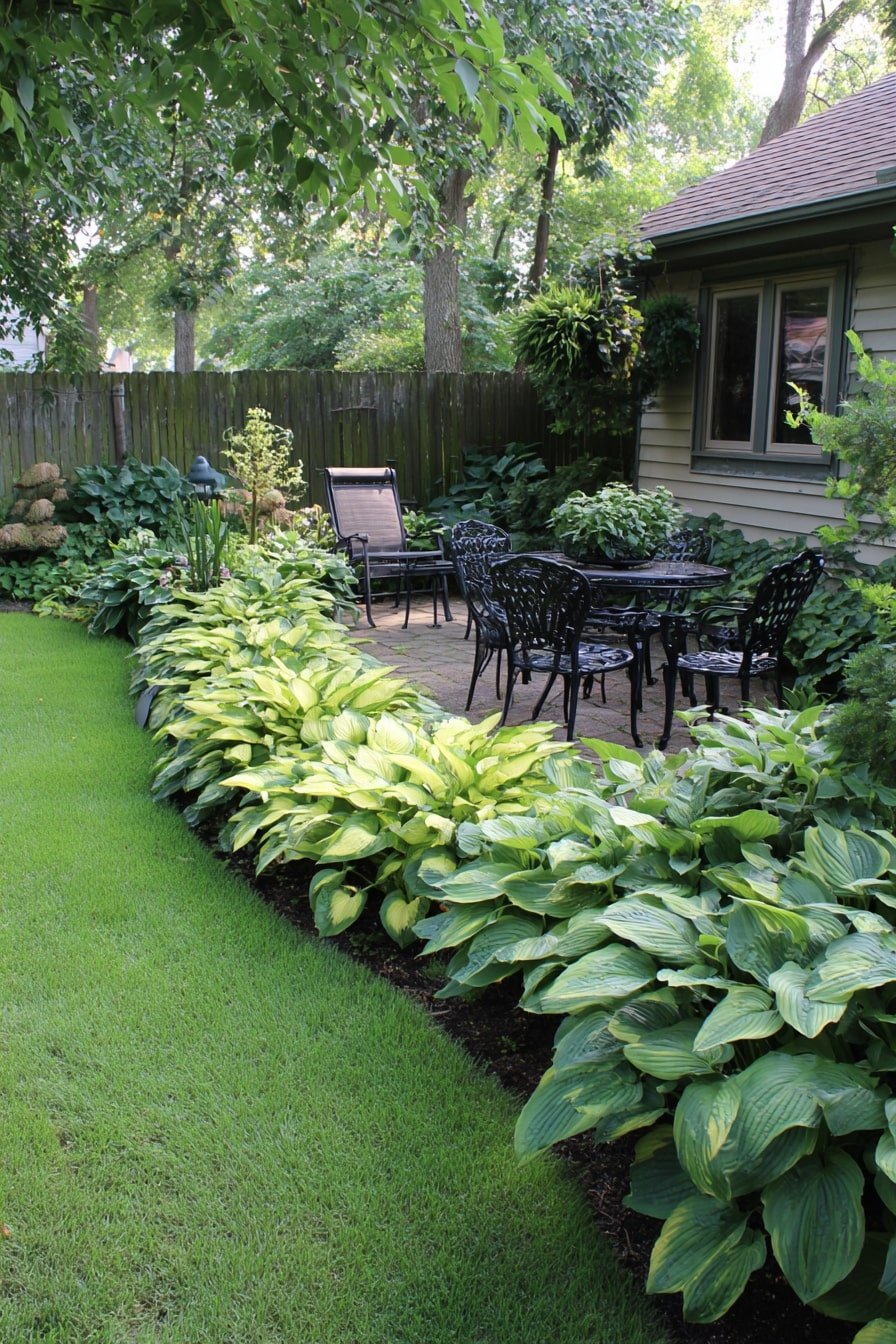
Broad-leaf hostas form a dense green edge, hiding patio foundations without hard materials. Their layered foliage spills just enough to soften the transition from pavers to lawn.
Varied greens and subtle variegation add depth, while seasonal blooms punctuate the border. A low-maintenance approach that blends structure with a garden’s natural flow.
9. Contrast Dark Skirting with Weathered Decking for Impact
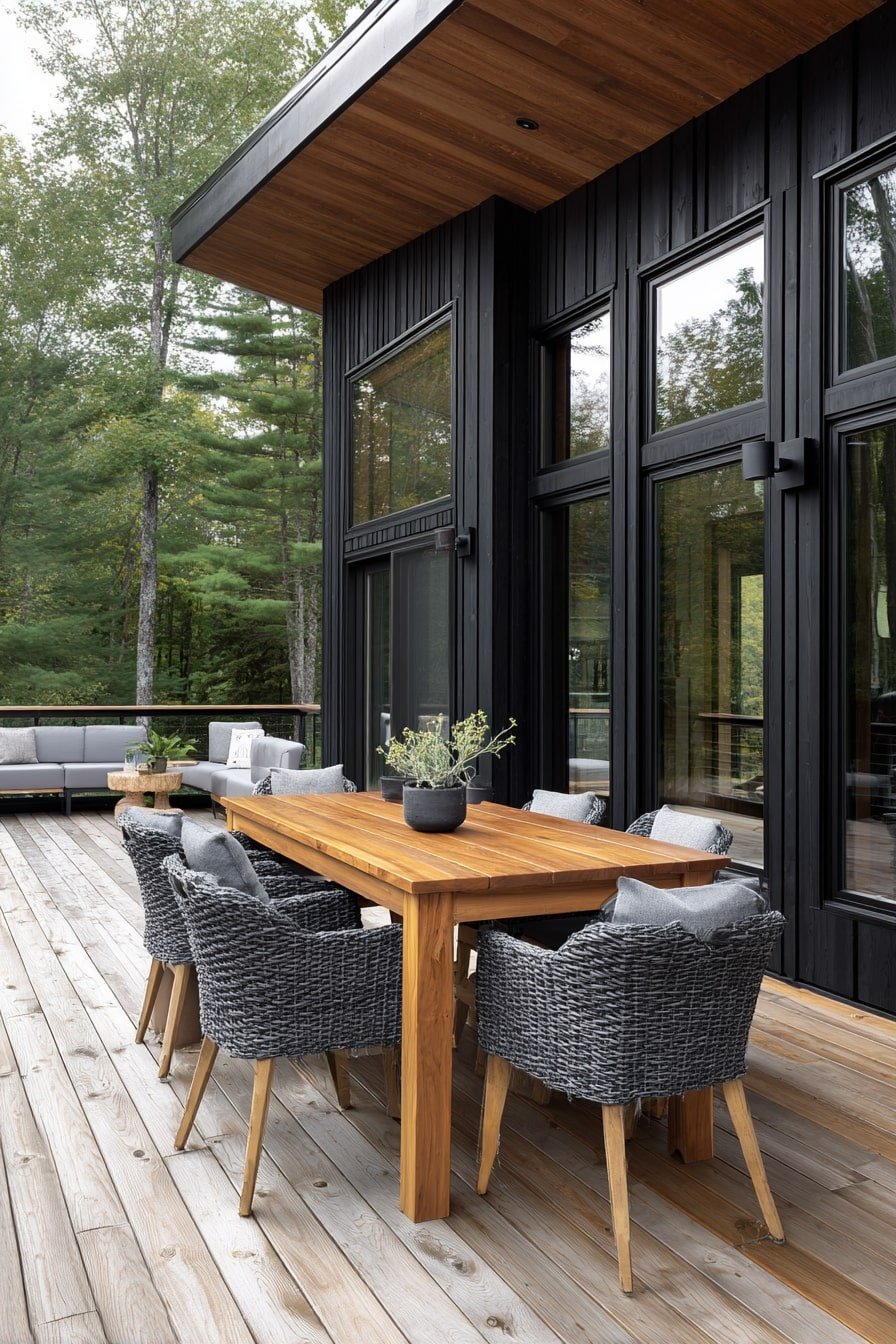
Vertical black cladding wraps the base of the house and extends into the deck skirting, creating a bold frame.
The deep tone makes the silvery planks pop, while tying into window trim for cohesion.
This high-contrast pairing feels modern yet grounded, especially when balanced with natural wood furniture and textured, woven seating.
10. Use Vertical Slats for a Sleek, Airy Deck Skirt
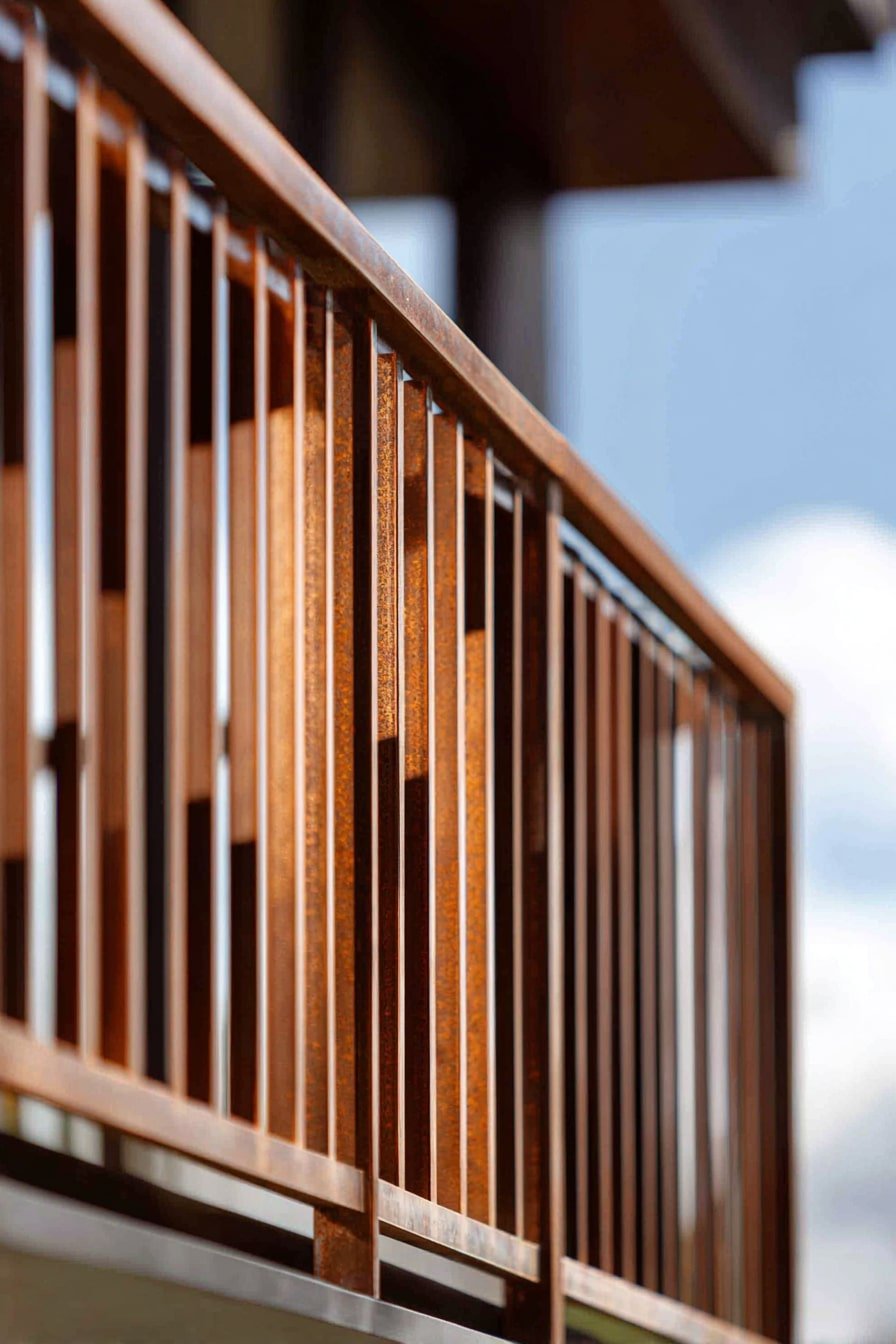
Narrow wood slats create a rhythm of light and shadow, giving skirting both texture and transparency.
The warm, rust-toned finish catches sunlight, adding depth without feeling heavy.
Gaps allow airflow and drainage, essential for deck longevity, while the vertical layout draws the eye upward, subtly elongating the structure’s profile.
11. Pair Solid Skirting with Painted Stairs for a Unified Porch
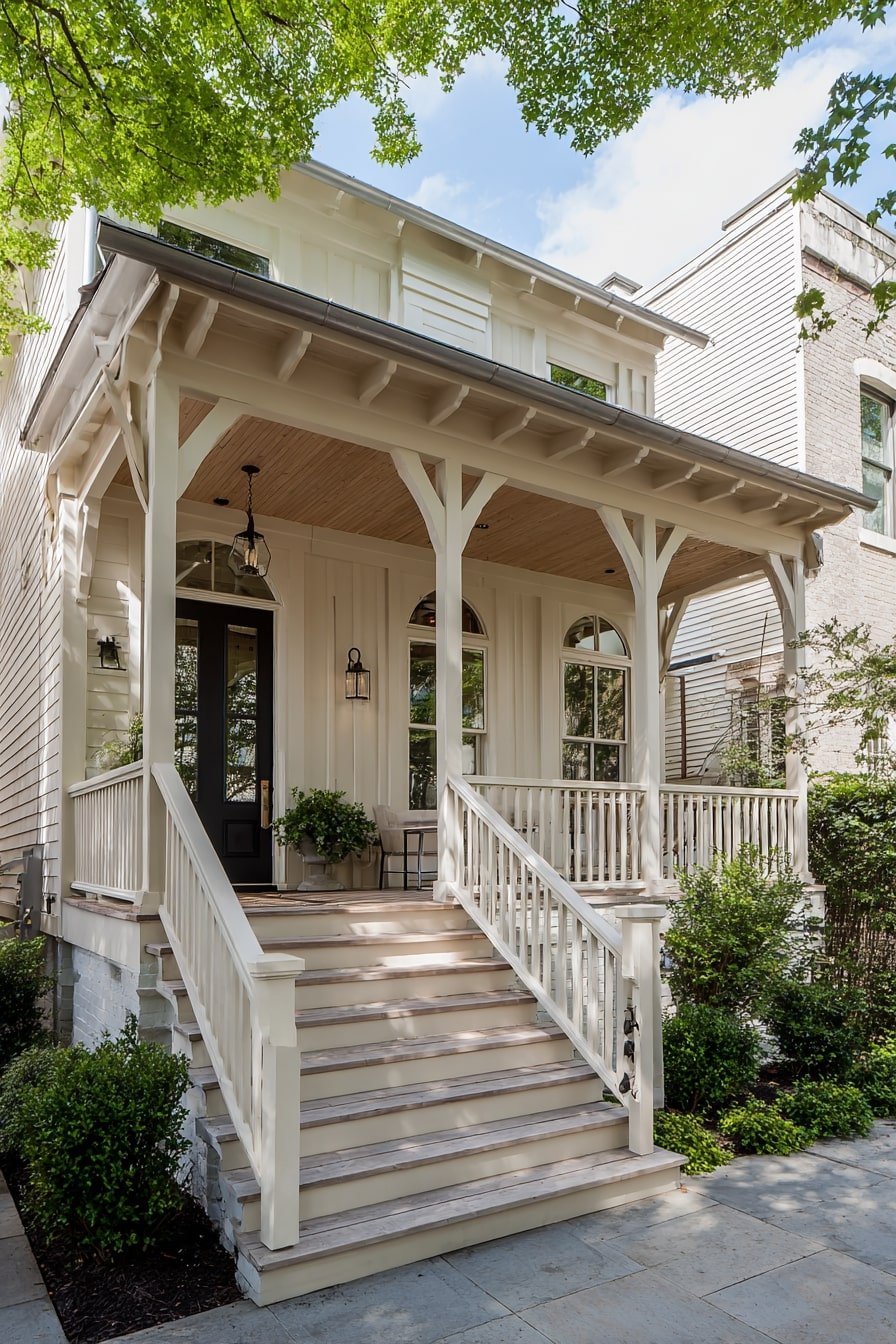
A continuous painted skirt encloses the base, hiding supports while blending seamlessly with the stair risers and railings.
The soft off-white keeps the structure airy, letting shadow lines and trim details stand out.
This approach creates a clean, cohesive front entry, especially effective when paired with symmetrical landscaping and a lightly stained porch ceiling.
12. Add Recessed Lighting to Deck Skirting for Evening Drama
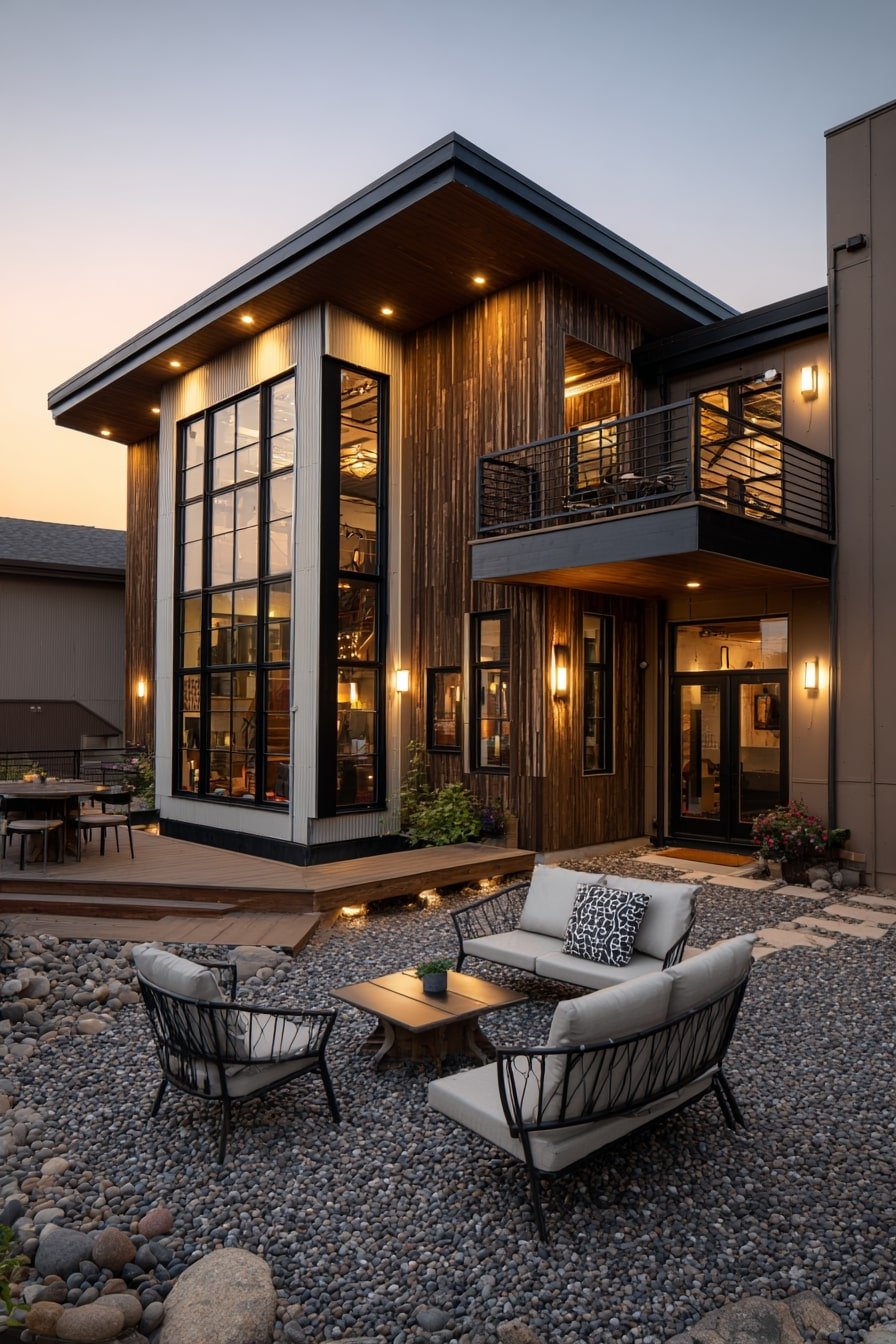
Wood decking extends to a crisp skirt, its edge lined with warm recessed lights that wash over river rock landscaping.
The effect is subtle yet striking, pulling focus to the deck’s shape after sunset.
Light placement also improves safety along the perimeter, blending form and function in a way that complements the home’s modern lines.
13. Blend Curved Steps with Stone Skirting for a Natural Flow
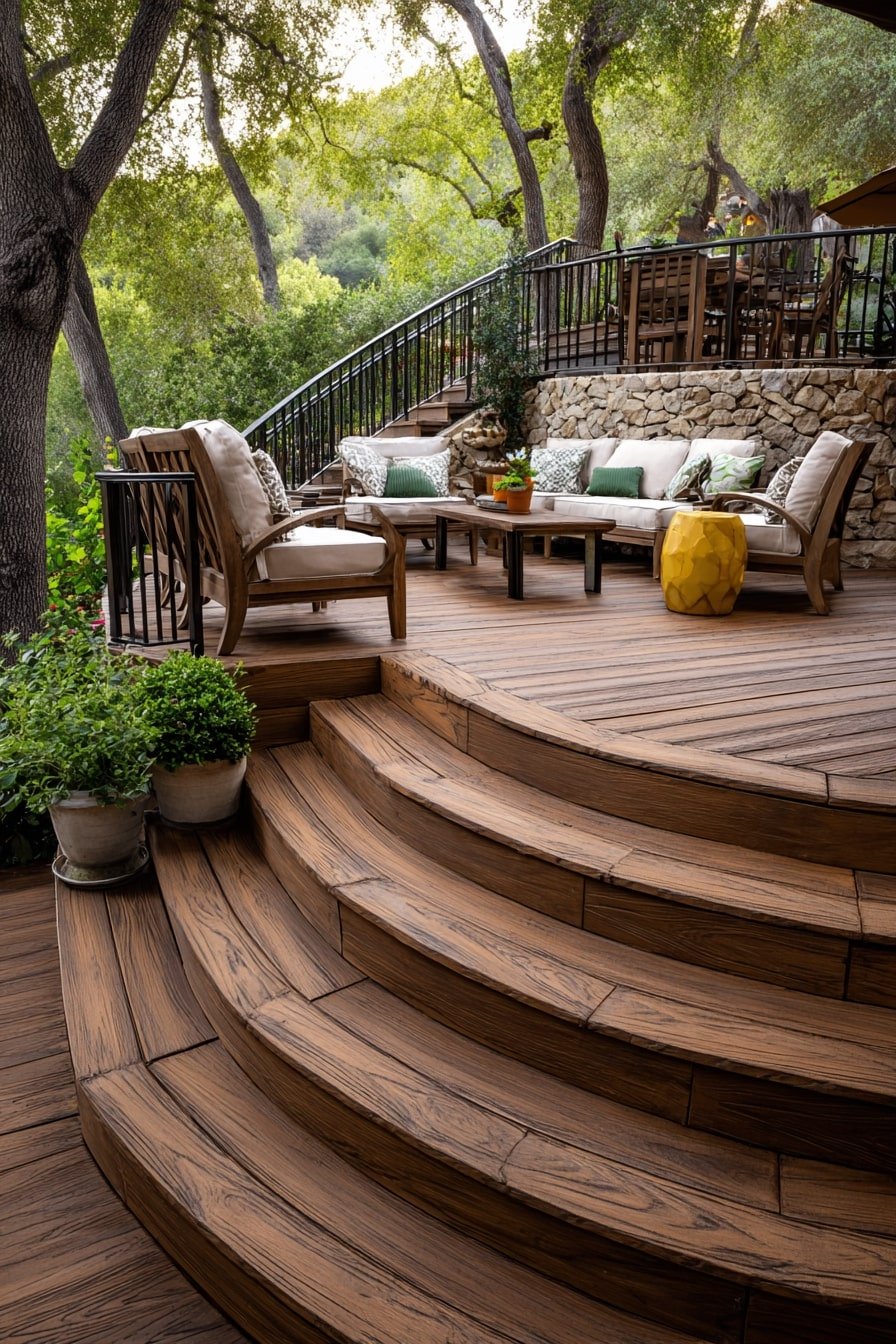
Sweeping steps in wood grain composite echo the deck’s arc, softening the transition to the lower seating area.
Behind, a stacked-stone skirt adds weight and texture, anchoring the structure into the landscape.
The pairing feels organic, especially surrounded by mature trees and layered plantings, creating a seamless bridge between built space and nature.
14. Use Full-Height Stone Skirting for a Mountain Lodge Feel
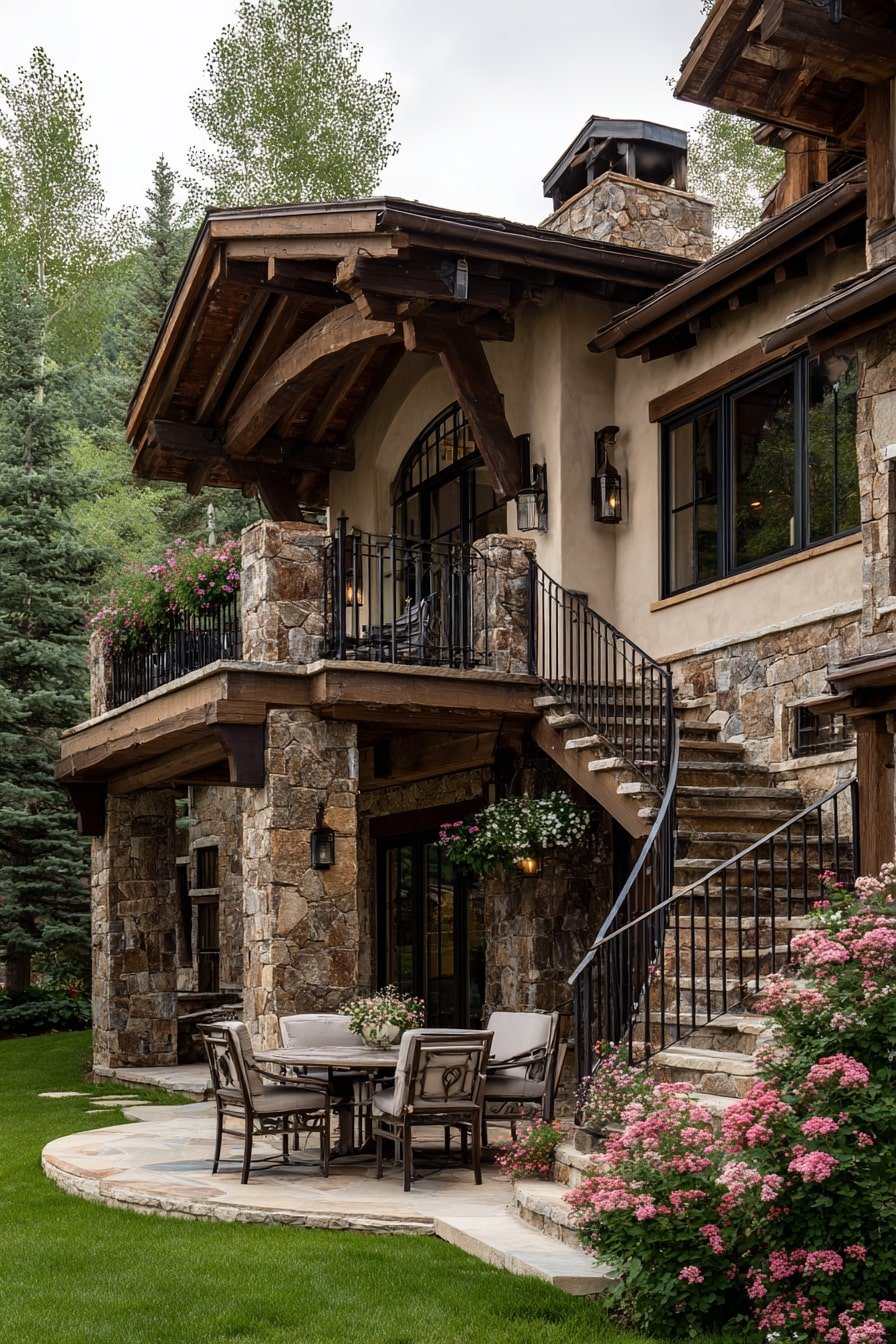
Thick stone columns rise from ground to railing, wrapping the entire deck base in textured masonry.
The look is rugged yet refined, perfect for alpine or woodland settings. Curved stone steps extend the skirting’s material down to the lawn, tying upper and lower spaces together.
Heavy timber beams reinforce the lodge aesthetic while soft plantings keep it from feeling too stark.
15. Pair Composite Trim with Stone Pavers for a Clean Edge
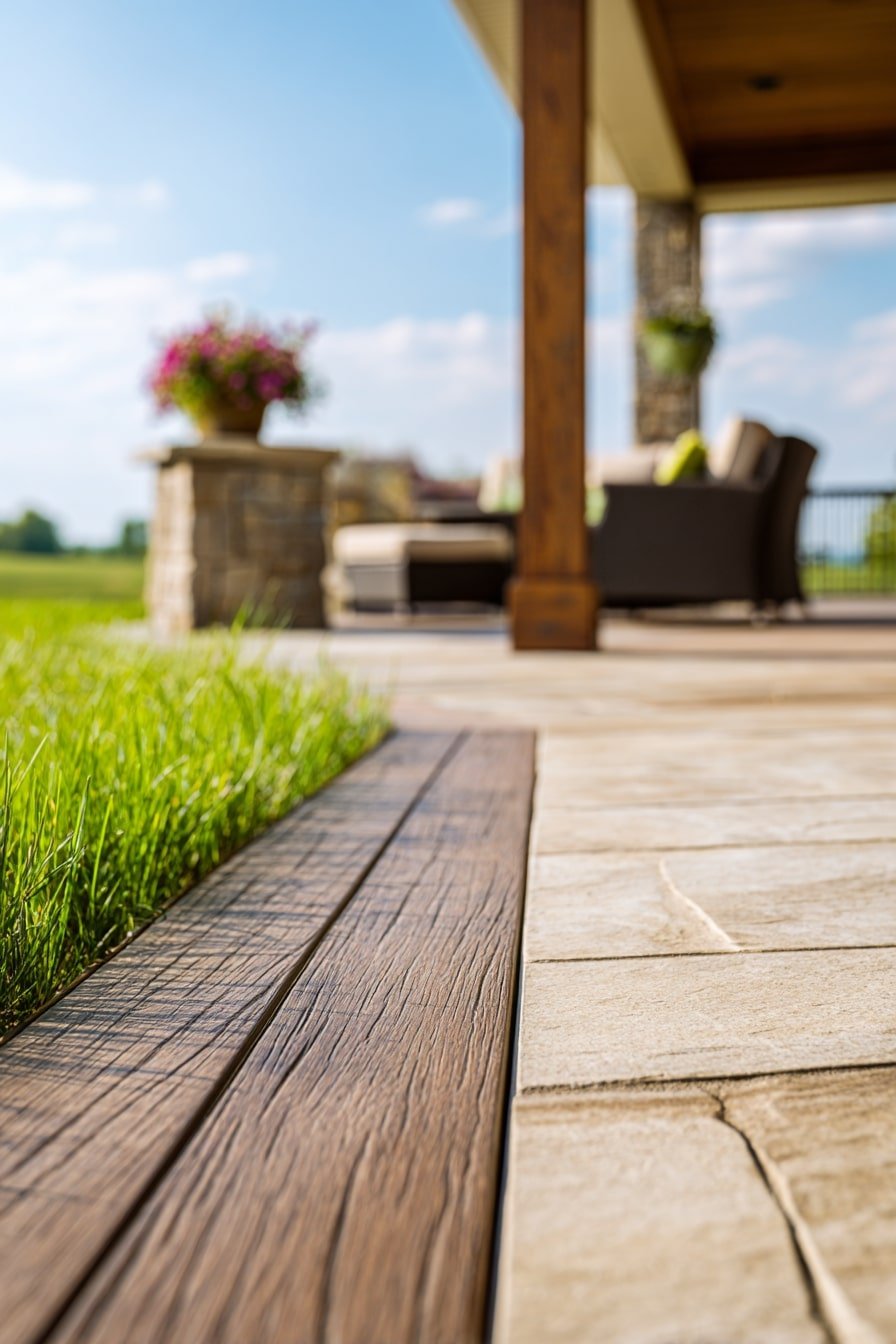
A narrow run of wood-look composite forms a sharp border between manicured lawn and pale stone pavers.
It acts as subtle skirting, hiding small gaps and lending visual weight to the patio’s edge.
The warmth of the grain balances the cooler stone, creating a polished, low-maintenance transition that works equally well in modern or traditional outdoor settings.
16. Use Decorative Lattice Panels for an Ornamental Finish
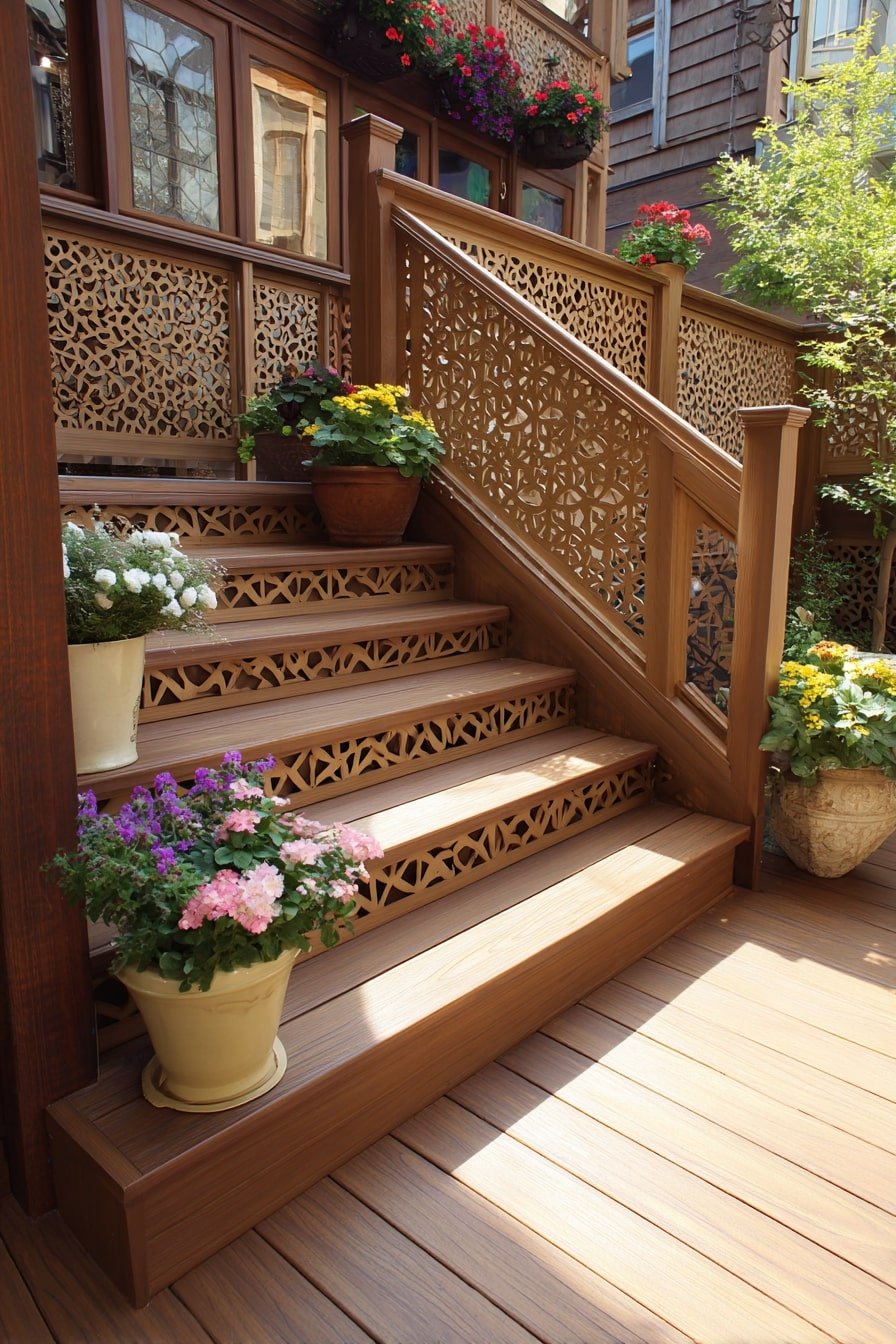
Intricate cutout panels double as skirting and railing infill, giving the deck a layered, custom-crafted feel.
The repeating leaf pattern softens the straight lines of the stairs while adding ventilation and light passage.
Warm tan tones tie the design to surrounding planters and flower boxes, creating a unified look that feels more like outdoor furniture than structural necessity.
